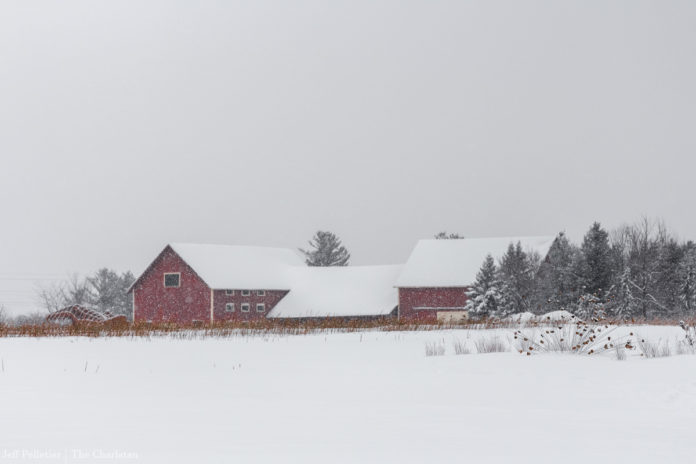
When it comes to predicting long-term weather forecasts for parts of Canada and the United States, the Farmers’ Almanac is generally one of the first publications to give farmers and city-dwellers alike some kind of answer.
The Farmers’ Almanac—an annually-published American agriculture periodical –was established in 1818 by poet, astronomer, and teacher David Young, who looked to use his skills as a mathematician, calculator and astronomer to predict long-term forecasts for North American.
Along with articles on natural remedies and moon cycles, the Farmer’s Almanac continues to publish annual issues, known specifically for its complex weather forecasts aimed to help farmers in seven regions of the U.S. and five regions of Canada prepare their crops.
How does the Almanac forge its long-term weather forecasts? According to editor Peter Geiger, the publication uses “sunspots, planet positions and the impact of the moon—along with a formula that has been passed down for generations.”
This formula has allowed for two-year in advance weather forecasts that regularly fall within the 80 to 85 per cent accuracy range for the regions the Almanac serves, he said.
The publication has released some details on what the formula is based on. However, the exact formula is a secret and has only been revealed to seven people within the last 204 years, according to Geiger.
The only person who knows the mathematical and astronomical formula today is the Farmer’s Almanac “weather prognosticator,” who is referred to only by the pseudonym Caleb Weatherbee.
However, David Phillips, senior climatologist at Environment Canada, said the Almanac’s method of predicting weather is really more like “throwing darts at a dartboard.”
“It’s not science,” he said. “It’s more astrology rather than astronomy, kind of thing. If you take one of the things they base their predictions on—sunspots—well, people have correlated sunspots with everything from church attendance to venereal disease. It’s one of those things people gravitate to in order to explain events using pseudo-science.”
According to Phillips, any kind of accuracy the Farmers’ Almanac may have each year is simply because its predictions are never completely out of left field.
“They know enough about the climate to know that [certain] things are impossible,” he said. “To say that you’re going to get, from Chicago to Montreal, a snowstorm between Christmas and New Year’s—well, they’re probably going to be right.”
“They don’t give specifics where they could really be marked on their accuracy—and in the end, the media tends to always focus on when they get it right rather than when they get it wrong,” Phillips added.
Consequently, as we may never know the exact methods used by the Almanac to predict the weather long-term, the publication offers a variety of resources for readers to plan ahead based on their own observations, such as a list of environmental identifiers for upcoming cold and harsh winters.
“Long before there was a weather service, people observed what nature was doing in order to prepare for winter,” Geiger said.
This list describes how the Almanac emphasizes the importance of observing the natural weather preparations of wildlife and abnormal environmental occurrences when predicting the upcoming winter season.
Squirrels stockpiling nuts early to increase their food supplies, muskrats burrowing holes high on river banks, and raccoons with thick tails and bright bands can all be signs of a long winter to come, according to the Almanac.
But do farmers themselves rely on the Farmers’ Almanac for long-term weather forecasting?
Bill Hunt, a produce farmer who resides in Slate River, Ont., said that he himself relies more on Environment Canada’s forecasts than the almanac.
“I need specific up-to-the-minute weather information for my farming,” he said. “So I use the government of Canada website, Environment of Canada, and I think they are pretty reliable.”
Hunt added that the scientific methods the government uses makes its forecasts less of a gamble.
“They have lots of information—there’s radar pictures, satellite pictures, and weather maps.”
While the Farmers’ Almanac long-term weather forecasts may be based on an inexact, and even controversial science, its annual presence on mainstream news sites makes it clear it’s still got a place in Canadian weather lore—whether or not its predictions are always true.
Featured image by Jeff Pelletier.





